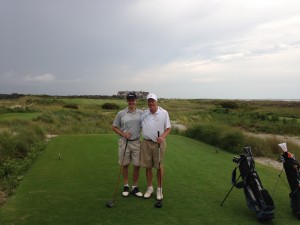Hello all-
Today’s post is a discussion about my experience with the Slow Carb Diet, as described by Tim Ferriss. The original blog post on the diet is from way back in 2007, and it is more fully described in Tim’s 2010 book, The Four Hour Body.
The basic idea of the Slow Carb Diet is to eat a low-carb regimen of meats, eggs, legumes, nuts, and non-starchy vegetables for 6 days out of the week, and then to live it up on the 7th day (“Cheat Day”) and eat as much as you want of whatever foods you want. During the other 6 days, you can also eat as much as you want, as long as you stick to the allowed foods.
The above linked blog post gives most of the details needed to start the Slow Carb Diet. Be aware that you should also avoid eating fruit or dairy products (including cheese) except during Cheat Days (this is in the book but not in the blog post).
My experience:
Overall, I am finding the diet to be easy to follow. My cheat day is Saturday. On all other days, my breakfast is 2 or 3 whole scrambled eggs with hot sauce and a chocolate protein shake. Lunches on work days are usually either Chipotle (salad with beans, meat, peppers/onions, hot salsa, guacamole), Mexican (fajita plate with extra beans/no rice), or BBQ. Dinners are more variable. I don’t have much urge to snack since the meals are very filling and satisfying. A handful of almonds works well as a quick snack.
I like having the cheat day as well- it would not be realistic to give up all the carb-heavy foods that I like forever. It’s nice to have 1 day a week to enjoy sugary sweets, pasta, and everything else.
So far, I’ve had pretty good results. My starting weight on 11/3/14 was 170.6 lbs and on 12/3/14 my weight was 161.4 lbs (total 9.2 lbs down in 30 days). During that time, I didn’t do any major exercise. I was fairly strict on the diet rules except for 3 extra cheat meals during a couple of dinner parties and for Thanksgiving.
My weight usually bounces up about 3 lbs the day after a Cheat Day but this extra water weight is usually gone by Tues/Wed of each week.
I’m pleased with my progress so far and am planning to continue the diet until I reach my goal weight of 150 lbs. I am planning on joining a gym and starting more regular exercise within the next month as well.
I would encourage my readers to give the Slow Carb Diet a try, especially if you are concerned about your weight. It’s a lot easier and more effective than starving yourself or running yourself to death on a treadmill.

